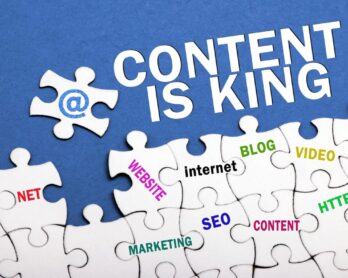When you’re writing product descriptions for your ecommerce site, it’s important to tout the benefits shoppers will derive from owning your products. Yes, features are important too, but only in so much as they generate the benefits.
With this in mind, finding the benefits in your product becomes essential to moving a shopper to conversion.

Let’s say you’re shopping for a new car.
While you might think you’re looking for a car, what you’re really looking for is transportation that will be at your beck and call whenever you decide to go someplace. This is one of the key benefits of owning a car.
Make sense?
Features vs. Benefits
A feature is a function or a quality of a product or service, while a benefit is the value the customer derives. In other words features are “what,” while benefits are “why.”
Take our car example above; let’s say the car has a 300-horsepower engine and all-wheel drive. Those are features. The benefits are merging into busy freeways and passing on two-lane roads can be accomplished with ease because the engine is powerful. It’s also safer in rain, snow and other conditions that would compromise traction because all four wheels propel the car.
People want features, but they buy benefits.
Finding the Benefits
Every product comes from the manufacturer with a list of the features its makers feel set it apart—or at least make it competitive. However, competition is so fierce and technology is so pervasive, features tend to be common throughout a given product category.
While all free website templates come with certain features in common, the benefits of using one from an accomplished provider like Shopify include solid customer support, a free trial period and other advantages smaller companies might not be capable of matching.
Similarly, all things being equal, would you really buy that fuel-thirsty engine and the added weight of an all-wheel drive system without understanding their payoffs?
Given people tend to make purchases based on their feelings. Logic might attract them, but emotion sells them. When you enumerate the benefits of a product, you’ll engage their emotions. As a marketer, it’s your job to examine the features of your product or service, put yourself in the mindset of the customer, and explain how those features will make their lives easier, better, more comfortable or more glamorous.
You’ll net far more sales extolling the authority and safety that powerful all-wheel drive car delivers than you will relying upon the logic of the features to take hold. And, you’ll sign more people with the feeling of security the benefits of dealing with a Shopify offers.
In other words, you must give them a “why” for every “what.”
Features Are Not to Be Ignored
Yes, I realize I just spent 400+ words telling you why benefits are what your customer really cares about. And, at the end of the day, it’s the truth. However, it’s not enough to just say the car is fast and safe. You must have a why for every what.
If you just say the car is fast and safe, those benefits will morph into features. Benefits must be put into some context, which is where features come into play. Thus, a good product description for our car would read as follows:
The 300-horsepower engine moves the car with great authority, so you’ll enter busy highways and pass on two-lane roads with ease. Meanwhile, the all-wheel drive system ensures you have good traction regardless of the weather or the surface of the road to enhance your safety.
Finding the benefits in your product requires you to step out of your role of seller and slip into that of buyer. For every feature, ask yourself how it makes the product more appealing.
What does it do to make life better, easier, safer, or more perfect?
You’ll be in a much better position to sell when you understand your offerings from that perspective.












